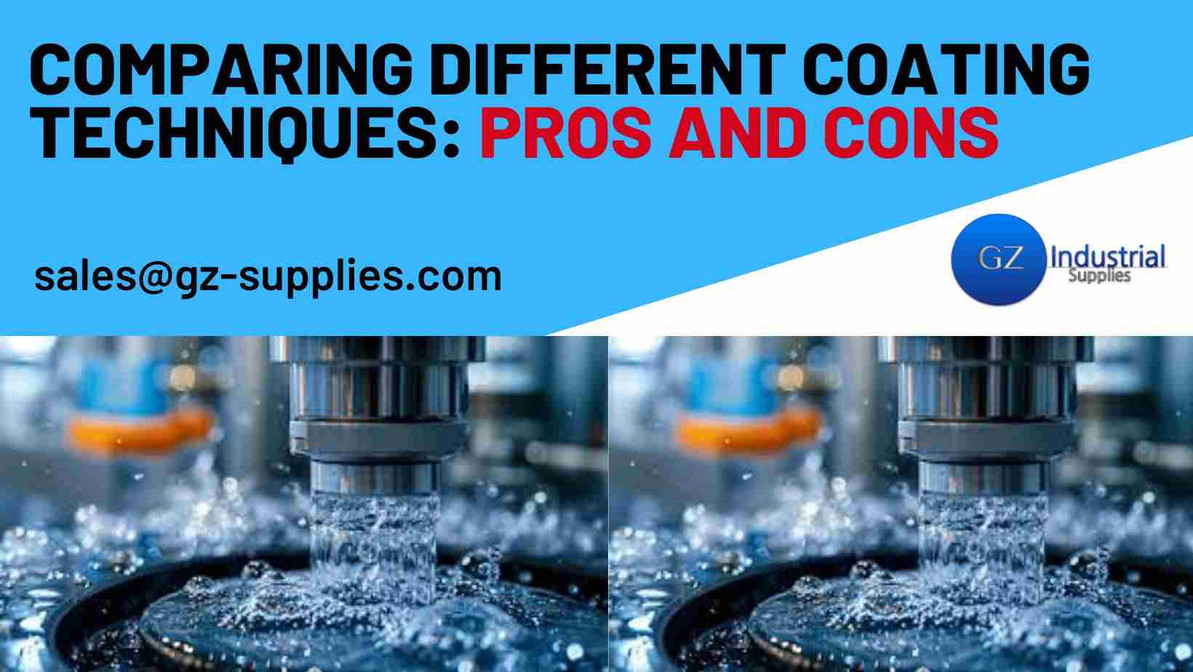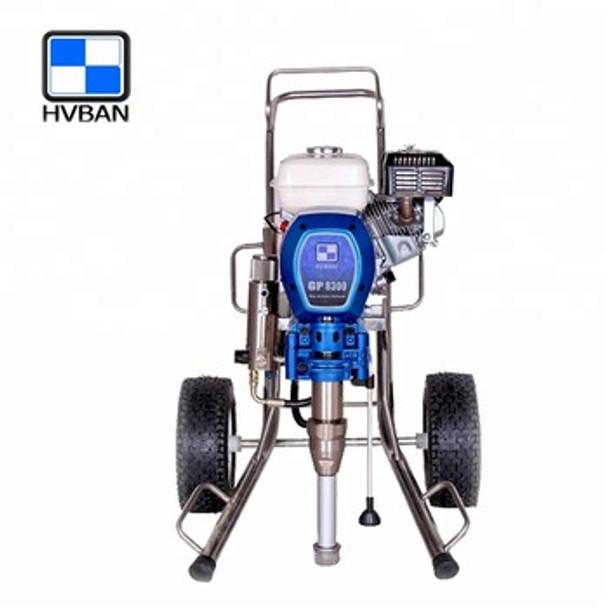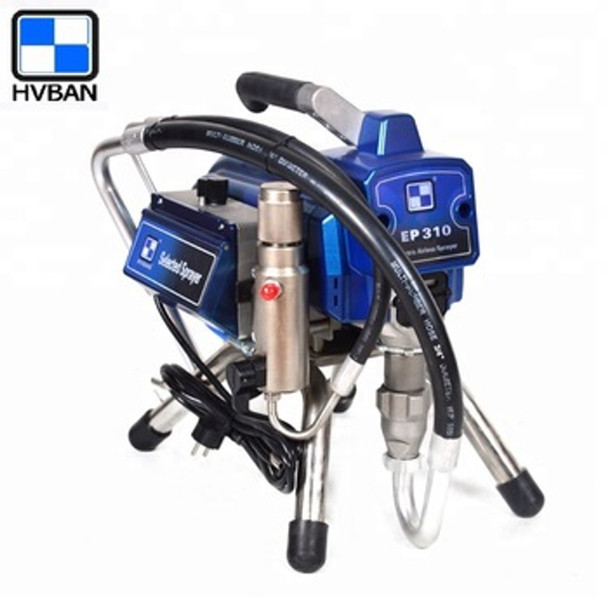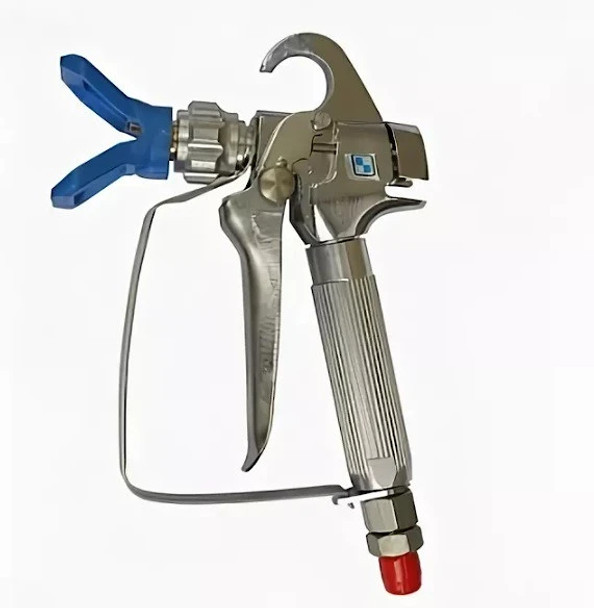Comparing Different Coating Techniques: Pros and Cons
Coating techniques play a vital role in the longevity and functionality of products and structures by providing essential protection against environmental, chemical, and physical stresses. This guide focuses on why selecting the right coating technique is crucial for ensuring optimal performance and durability of the coated surfaces. When comparing different coating techniques, each method has its distinct advantages and drawbacks that make them suitable for specific applications.
Buy Online... Gas Powered Airless Sprayer HVBAN GP8300
Powder coating is renowned for its durability and eco-friendliness, providing a thick, robust finish that is ideal for outdoor furniture and automotive parts; however, it requires a significant initial investment in equipment and is limited in color blending capabilities. Liquid painting, on the other hand, offers a broader range of colors and easier application on diverse surfaces, making it perfect for detailed and decorative work, although it tends to have longer drying times and higher volatile organic compound (VOC) emissions. Electroplating provides excellent durability and resistance, enhancing the electrical conductivity of metal parts, but it involves complex processes and can pose environmental hazards if not managed properly. Anodizing, specific to aluminum, offers exceptional corrosion resistance and aesthetic versatility with its color options, though it is generally more expensive and limited to aluminum substrates. Each of these techniques presents a trade-off between cost, application ease, environmental impact, and performance characteristics, necessitating a careful evaluation based on the specific requirements of the project at hand.
This guide will compare several popular coating techniques, highlighting their respective advantages and disadvantages. By understanding these differences, readers can make informed decisions suitable for their specific industrial, commercial, or personal projects.
Learn more: Types of Coatings: Choosing the Right Paint for Your Surfaces
Types of Coating Techniques
Coatings are specialized layers applied to surfaces to protect, decorate, or add functionality. They can vary widely in terms of chemical composition and application techniques. Common types include powder coating, liquid painting, electroplating, and anodizing, each serving different purposes and applications.
1. Powder Coating
Powder coating involves applying a dry powder—usually a mixture of finely ground particles of pigment and resin—to surfaces and curing them under heat to form a skin. It is primarily used on metals and is applied through electrostatic spray deposition.
Pros
- Durable Finish: Provides a thick, hard finish that is tougher than conventional paint.
- Cost-effective for Large Batches: Economical on a large scale due to minimal wastage and lower average costs over high volumes.
- Environmentally Friendly: Produces fewer volatile organic compounds (VOCs) than traditional liquid coatings.
Cons
- Limited Color Blending: Color blending and matching can be more challenging than with liquid paints.
- Higher Initial Setup Cost: Requires a substantial upfront investment in equipment and setup.
- Material Limitations: Generally limited to materials that can withstand the curing process's high temperatures, typically metals.
Buy Online...Airless Sprayer HVBAN EP310
2. Liquid Painting
Liquid painting involves applying a liquid paint that contains pigments, binders, and solvents, to a surface through brushing, rolling, or spraying. This method is versatile and can be used on a variety of materials including metal, wood, and plastic.
Pros
- Versatility in Colors and Finishes: Offers a vast range of colors and can achieve many textures and finishes.
- Easier On-Site Application: Can be easily applied in a variety of settings without the need for specialized equipment.
- Applicable to Various Surfaces: Suitable for many different types of materials, providing broad usability.
Cons
- Longer Drying Times: Can require extended periods to dry fully, which may delay project timelines.
- Potential for Inconsistent Finishes: Application technique and conditions can greatly influence the quality of the finish.
- Higher VOC Emissions: Typically involves solvents that can emit VOCs, posing environmental and health risks.
3. Electroplating
Electroplating involves applying a metal coating to an object by using an electrical current to reduce dissolved metal cations so that they form a coherent metal coating on the electrode. This method is often used for both decorative and functional purposes, adding corrosion resistance, enhanced appearance, or increased durability to metal parts.
Pros
- Enhanced Durability: Adds a durable metal coating that can extend the life of an object.
- Corrosion Resistance: Ideal for coating metals that are prone to rust, such as steel.
- Improved Electrical Conductivity: Often used in electronics to ensure metal parts conduct electricity effectively.
Cons
- Complexity of Process: Requires specific technical knowledge and precise control over the plating conditions.
- Environmental and Health Risks: Generates hazardous waste and involves toxic chemicals, requiring stringent safety measures.
- Material Limitations: Primarily applicable to metals or conductive surfaces, limiting its use to certain substrates.
Anodizing
Anodizing is an electrochemical process that converts the metal surface into a durable, corrosion-resistant, anodic oxide finish. This technique is primarily used on aluminum and can be dyed to provide aesthetic enhancements while maintaining the surface's natural luster.
Pros
- Hard and Durable Surface: Creates an oxide layer that is integrated with the underlying aluminum, enhancing durability and resistance to wear.
- Corrosion and Wear Resistance: Especially beneficial for components exposed to harsh environmental conditions.
- Aesthetic Flexibility: Allows for a wide range of color finishes, making it suitable for decorative purposes.
Cons
- Limited to Aluminum: Mostly used for aluminum and its alloys, which restricts its application.
- Color Fading: While anodized colors are durable, they can fade over time when exposed to prolonged sunlight.
- Higher Cost: Generally more expensive than other coating processes due to the complexity of the process and the durability of the finish.
Comparison and Use Case Scenarios
To choose the best coating technique, consider factors such as the intended use, environmental exposure, substrate material, and aesthetic requirements. For instance, powder coating is preferable for items that require a tough, durable finish, whereas liquid painting might be chosen for its color variety and ease of application.
B. Use Case Examples
- Powder Coating: Best for outdoor furniture and automotive parts due to its durability and resistance to weathering.
- Liquid Painting: Ideal for interior walls and custom furniture where a specific color or finish is desired.
- Electroplating: Suitable for metallic components that require enhanced conductivity or rust resistance, such as in automotive or electronic applications.
- Anodizing: Excellent for aerospace and automotive parts where high resistance to corrosion and thermal stability are necessary.
Buy Online... HVBAN Airless Paint Spray Gun HB131
Further Reading and Resources
The Ultimate Guide to Coating Painting Services: Everything You Need to Know
Understanding Surface Preparation: A Crucial Step in Coating Painting Services
Frequently Asked Questions
1. What is the most cost-effective coating technique for large quantities?
Powder coating is often the most cost-effective option for large quantities due to its low waste and fast processing time.
2. Can I use multiple coating techniques on the same item for enhanced properties?
Yes, it's common to use multiple coating techniques on the same item to combine properties such as durability and aesthetic appeal. For example, electroplating followed by a clear coat can enhance both function and finish.
3. How do I ensure environmental compliance with my coating choice?
Select coatings that are labeled as low-VOC or VOC-free, and ensure that the application process complies with local environmental regulations.
4. What are the safety considerations when applying coatings?
Always use appropriate personal protective equipment (PPE), ensure proper ventilation, and follow all safety guidelines for handling and disposal of materials.
5. Where can I find reliable coating services?
For reliable coating services, visit Epoxy Oilserv. We offer a range of professional coating solutions tailored to meet diverse industrial needs.
Conclusion
This guide has provided a comprehensive overview of various coating techniques, each with its unique set of advantages and disadvantages. We explored powder coating for its durability and eco-friendliness, liquid painting for its versatility in colors and finishes, electroplating for enhanced durability and conductivity, and anodizing for its superior corrosion resistance and aesthetic flexibility. Understanding these differences is crucial for selecting the right coating technique that aligns with the specific requirements of your project.
When choosing a coating technique, prioritize the specific needs of your project:
- Durability and Environment: Consider conditions such as exposure to weather, mechanical wear, and chemical interactions.
- Aesthetics: Decide on the importance of color and finish in the project's final appearance.
- Cost and Feasibility: Assess the budget and available resources, including the complexity of the application process.
By carefully weighing these factors, you can select the most appropriate coating technique that offers the best balance of performance, cost, and appearance. Incorporating these considerations will help ensure that your choice of coating technique maximally benefits your project, enhancing both its functional and aesthetic qualities.
Recent Posts
-
The Science of Floor Paint: How it Works and What to Expect
Introduction to Floor PaintWe are excited to delve into the fascinating world of floor paint an …May 17, 2024 -
The Definitive Guide to Protective Coatings: Types, Applications, and Benefits
Diverse Coating Types: Understanding the variety of protective coatings, such as epoxy, polyuretha …May 15, 2024 -
How to Choose the Right Surface Maintenance Solutions for Your Needs
Surface maintenance solutions encompass a diverse range of products, techniques, and services aimed …May 15, 2024







